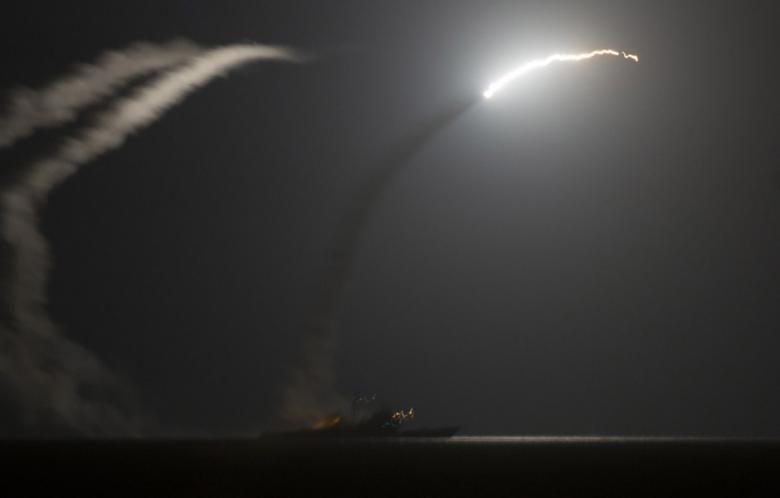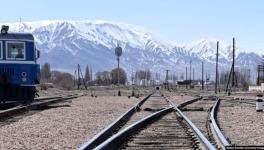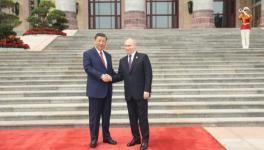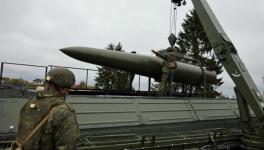US’ anti-ISIS Campaign: Emulating the ‘Success’ in Somalia and Yemen?
US President Barack Obama pointed to “successful” campaigns in Yemen and Somalia as models for his strategy to “degrade and destroy” the Islamic State in Iraq and Syria (ISIS). But in both countries, US military action has only worked to embolden extremist groups like al-Qaeda in the Arabian Peninsula (AQAP) and al-Shabaab.
Recently, US President Barack Obama gave a speech delineating his strategy to eliminate ISIS, the militant group that has taken over swaths of eastern Syria and northern and western Iraq. One part of Obama's speech was particularly galling and revealing in terms of what it says about US military strategy:
"But I want the American people to understand how this effort will be different from the wars in Iraq and Afghanistan. It will not involve American combat troops fighting on foreign soil. This counterterrorism campaign will be waged through a steady, relentless effort to take out ISIL wherever they exist, using our air power and our support for partner forces on the ground. This strategy of taking out terrorists who threaten us, while supporting partners on the front lines, is one that we have successfully pursued in Yemen and Somalia for years."

The United States and its Arab allies unleashed deadly bomb and missile strikes on jihadists in Syria on Tuesday, opening a new front in the battle against the Islamic State group. (Photo: AFP)
This means the Obama administration is modeling its military campaign in Iraq and Syria on its campaigns in Yemen and Somalia – air and drone strikes, missile attacks, training and supporting local forces, and missions conducted by special operations forces. Since entering office in 2009, President Obama has favored this style of militarism. It projects American power with less financial cost and risk to US military personnel. So it is no surprise that he would implement the same strategy in Iraq and Syria.
This means the Obama administration is modeling its military campaign in Iraq and Syria on its campaigns in Yemen and Somalia – air and drone strikes, missile attacks, training and supporting local forces, and missions conducted by special operations forces.
But for him to call the US military campaigns in Yemen and Somalia "successful" completely obliterates history as US militarism in Yemen and Somalia has been far from triumphant. The impacts of US militarism, particularly the killing of civilians, has emboldened groups like al-Qaeda in the Arabian Peninsula (AQAP) in Yemen and al-Shabaab in Somalia. To duplicate that strategy essentially means that the US will swell, rather than quell, ISIS.
US intelligence agencies and many counterterrorism experts say that ISIS is not an immediate threat to the United States. They even point out that ISIS could become a threat if the US launches a military action against them. But this has not stopped the march to war.
However, the latest American military adventure in Iraq and Syria has less to do with mitigating extremist threats and more to do with protecting US "interests" in the region. One of those "interests" is oil. ISIS' presence in northern Iraq puts it dangerously close to the city of Erbil, the oil-rich capital of the Kurdish Regional Government. American oil and gas companies ExxonMobil and Chevron have contracts to drill in Kurdistan. Along with the oil companies come American facilities and personnel like "the usual contractors, the oilfield service companies, the accountants, the construction firms, the trucking firms, and, at the bottom of the economic chain, diverse entrepreneurs digging for a score," according to the New Yorker. ISIS may not be a threat to domestic American security, but its presence could upset the flow and American control of Iraqi oil, which is something the United States is deeply concerned about.
Before Obama's speech, by September 10, US Air Force and Navy aircrafts had already flown more than 2,700 missions in Iraq, including 156 airstrikes. As of now, the US has launched around 190 airstrikes in Iraq since bombing began in August. These strikes will increase as the US military campaign continues.
Recently, the United States, along with Bahrain, Jordan, Qatar, Saudi Arabia, and the United Arab Emirates, launched airstrikes against ISIS targets in Syria, marking the beginning of a longer military campaign.
Meanwhile, the United States unilaterally fired Tomahawk cruise missiles at an al-Qaeda splinter group called the Khorasan Group in sites near Aleppo. The US government alleges Khorasan – largely unknown by the public until now – was plotting "imminent" attacks against the West. However, it is likely that the threat is overblown. Keep in mind that the Obama administration destroyed the meaning of the word "imminent" to the point where, according to a White House memo, in order to launch a strike against al-Qaeda and its affiliates, it is not required to have "clear evidence that a specific attack on US persons and interests will take place in the immediate future." As of this writing, while US airstrikes hit dozens of militant targets, they also killed at least 10 civilians, according to the Syrian Human Rights Committee.
The United States already has 1,600 troops in Iraq, mainly special operations forces to protect US personnel and facilities and advise Iraqi and Kurdish fighters. As the war continues, the US may put more. The US government insists these troops will not serve a combat mission but, rather, focus on advising local forces. Should airstrikes not work, the US military might recommend sending ground troops to join Iraqi and Kurdish forces in combat missions against ISIS. However, according to a Daily Beast eye-witness report, American special operations commandos are already on the ground fighting in Iraq alongside Iraqi and Kurdish forces despite President Obama's assurances that the US will not get bogged down in another ground war in Iraq and Syria.
Along with the US Congress' 2002 Iraq invasion resolution, the Obama administration is using the 2001 Authorization for Use of Military Force (AUMF) to justify military action in Iraq and Syria. Passed merely days after 9/11, the AUMF authorized the President to use "all necessary and appropriate force" against those responsible for or who aided the 9/11 attacks. This makes it the legal linchpin for the global war on terror.
As of this writing, while US airstrikes hit dozens of militant targets, they also killed at least 10 civilians, according to the Syrian Human Rights Committee.
For military action in Syria, the Obama administration's twist of the 2002 Iraq resolution is particularly clever. Administration officials told the New York Times, that "the 2002 Iraq war authorization can be read in part as promising to help foster a stable, democratic government in Iraq, which would include defending it from terrorist attacks."
However, the AUMF has been stretched far beyond its original mandate. It is now used to go after groups neither responsible for, nor active at the time of the 9/11 attacks, such as AQAP and al-Shabaab. The AUMF is used to support drone strikes and other special operations in Pakistan, Yemen, and Somalia. To do this, the Obama administration stretched the AUMF to cover not just al-Qaeda and the Taliban but also "associated forces", or co-belligerents, of those groups. This makes it apply to AQAP, al-Shabaab, and other Islamic militant groups. Thus, not only is the Obama administration applying the Yemen and Somalia military strategies to Iraq, it is also using the same legal authority to justify it. This is despite ISIS being a different and antagonistic organization to al-Qaeda.
Somalia: Strengthening al-Shabaab through air strikes
The covert US war in Somalia has been destructive and counterproductive. On September 1, a US airstrike killed al-Shabaab leader Ahmed Abdi Godane in a vehicle and compound south of Mogadishu. Months before that, in late January, another US airstrike killed Godane's associate Ahmed Mohammed Amey. The US government presented Godane's death as a major success. After confirming Godane's death, Pentagon press secretary Rear Admiral John Kirby said, "Removing Godane from the battlefield is a major symbolic and operational loss to al-Shabaab."
However, al-Shabaab quickly overcame that "major symbolic and operational loss." A few days after Godane's death, al-Shabaab appointed a new leader to replace him – a man named Ahmed Umar, also known as Abu Ubaidah. So the US killed one al-Shabaab leader who was then quickly replaced by someone else. Success?
The story of al-Shabaab's rise goes back almost a decade. After 9/11, the United States formed a strong alliance with Ethiopia. In 2008, the US gave the country $1 billion in aid, making Ethiopia one of the largest African recipients of American aid. As a predominantly Christian country bordered by Muslim countries, such as Somalia, with alleged ties to al-Qaeda, Ethiopia was seen by the US as a natural ally in the global “war on terror.”
In 2006, the Islamic Court Union (ICU) – a loose organization of Islamic judiciaries – rose to power in Somalia and provided a sense of order during a time of great instability, which earned it substantial support among Somalis. Meanwhile, the United States and Ethiopia suspected the ICU had ties to al-Qaeda and other Islamic militant groups and sought to eliminate it. However, at the time, there were very few al-Qaeda fighters in Somalia. Al-Shabaab was one faction, among 13, of the ICU but had very little power.
The covert US war in Somalia has been destructive and counterproductive.
Initially, Ethiopia was hesitant to invade Somalia because it lacked the resources to implement such a large military operation. But thanks to US pressure, it did. In December 2006, Ethiopia, with substantial American help, invaded and occupied Somalia until 2009. During the war, the US provided Ethiopian troops with intelligence, training, weapons, and launched its own airstrikes against alleged Islamic militant fighters that wound up killing civilians in the process. The Ethiopian invasion and occupation of Somalia was essentially a US proxy war in the Horn of Africa.
The 2006-2009 US-backed Ethiopian invasion and occupation of Somalia was a total disaster. The war killed thousands of people, including many civilians, displaced millions, and created further human suffering and turmoil in Somalia. As a result of the war's destruction, more Somalis supported the Islamic militant group al-Shabaab. While the group preaches a very extreme branch of Islam, it also offers social services to a suffering population. Moreover, it proved itself as a formidable fighting force against the invaders. Rather than rooting out extremism, the US-backed Ethiopian war in Somalia exacerbated it.
Given these lessons, Obama's war against ISIS will likely embolden rather than quell the group.
Now the US is waging a covert war against an enemy it helped create. The US conducts air and drone strikes, helicopter and AC-130 gunship attacks, commando raids, and backs local warlords to hunt down or kill alleged al-Shabaab fighters. According to the Bureau of Investigative Journalism, US covert operations in Somalia, so far, have killed about 171 people, including 48 civilians, since 2007.
Yemen: Exacerbating extremism
In Yemen, the US has waged another covert war against AQAP in the form of air and drone strikes, missile attacks, and backing Yemeni security forces. This war, like the US war in Somalia, has destabilized and inflicted further human suffering in Yemen.
America's covert war in Yemen began when the Bush administration launched a drone strike in 2002 that killed six people, including a US citizen. Since 2009, the Obama administration ramped up that war by increasing air and drone strikes. When the Obama administration first came into office, in December 2009, it launched a cruise missile attack in southern Yemen that massacred 52 people, including 14 women and 21 children. They were mostly civilians.
The American covert war in Yemen, so far, has killed anywhere between 489 and 1,400 people, including around 200 civilians, according to the Bureau of Investigative Journalism. However, these figures don't tell the full story. The Obama administration considers any military-age male in a strike zone to be a "militant," unless proven innocent after death. Drone strikes often target and kill low-level fighters involved in internal struggles in countries like Pakistan or Yemen, but who pose little threat to the United States. Targeting for drone strikes is based on tracking and metadata analysis of cell phone SIM cards rather than human intelligence. Because SIM cards often switch hands in places like Pakistan and Yemen, drone strikes often accidentally kill innocent civilians. Under Obama's watch, US drone strikes have killed over 2,400 people in Pakistan, Yemen, and Somalia.
AQAP came into existence in 2009. As with the war in Somalia, US covert operations in Yemen have exacerbated, rather than deterred, extremism. In 2009, AQAP had no more than 300 fighters. By 2012, after the intensification of drone strikes, their numbers grew to over 700. The civilian deaths, trauma, and other human suffering inflicted by US drone strikes and other covert operations anger civilian populations and encourage them to support AQAP.
Given these lessons, Obama's war against ISIS will likely embolden rather than quell the group. American military campaigns strenghtened AQAP and al-Shabaab in Yemen and Somalia respectively. The New York Times recently reported that American airstrikes have not pushed back ISIS from the territory it controls. If this trend continues, the United States will likely be drawn into another ground war in Iraq. This would further destabilize the region, kill more innocent people, and further devastate Iraq and Syria.
Adam Hudson is a freelance journalist and writer based in the San Francisco Bay Area. He covers US national security, war and peace issues, Guantanamo, human rights, police brutality, and institutional racism. He tweets @adamhudson5
Disclaimer: The views expressed here are the author's personal views, and do not necessarily represent the views of Newsclick
Get the latest reports & analysis with people's perspective on Protests, movements & deep analytical videos, discussions of the current affairs in your Telegram app. Subscribe to NewsClick's Telegram channel & get Real-Time updates on stories, as they get published on our website.
























